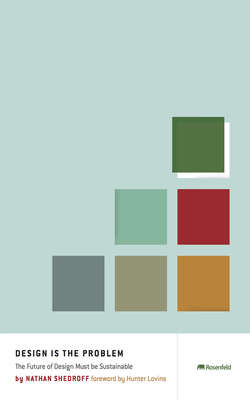Читать книгу Design Is The Problem - Nathan Shedroff - Страница 10
На сайте Литреса книга снята с продажи.
Diversity and Resiliency
ОглавлениеPerhaps the best way to judge any system or solution is to assess how resilient it is. Systems that are resilient have a greater chance of lasting, evolving, and responding to change. Nature has evolved and proven to be tremendously resilient, which has allowed it to grow, change, and continue for millennia. Cultures and societies that are resilient have the same attributes. Moreover, each of these systems has a mechanism of resiliency and longevity (such as DNA in nature).
In their book, Brittle Power, Amory and Hunter Lovins define systems that are resilient as able to withstand large disturbances from the outside. They describe several attributes of resilient systems:
Employs passive behavior
Employs active feedback (learns and adapts)
Detects faults early
High substitutability and redundancy
Optional interconnectedness (can connect or disconnect when needed)
Promotes diversity
Makes use of standardization
Dispersed
Hierarchically embedded
Stable and flexible
Simple
Makes limited demands on social stability
Accessible
Corporations are more resilient organizations since they’ve been granted personhood, limited liability, and immortality (though these can cause other problems). Since corporations can survive their founders, as well as shield their owners from the actions of their managers, they attract more diverse capital and can govern themselves in ways that offer a great deal of flexibility and strategies.
The problem with diversity is that it’s often not valued in society.
Diversity is one strategy for resiliency since it allows multiple solutions and approaches to solve or respond to the same challenge. A diverse community is more able to weather a storm, a bad growing season, a financial hardship, or a cultural crisis. Companies with diverse resources have more tools to respond to market challenges, customer whims, or corporate missions.
The problem with diversity is that it’s often not valued in society. Consider how many varieties of apples (~7500) or rice (~80,000) have evolved. Before humans, these varieties helped all of nature (plants, animals, bacteria, fungi, monera, and so on) respond to often hazardous changes in the environment due to weather, tectonic events, or those from space. Today, however, human societies have reduced the number of varieties of almost everything natural to just a few. The vast majority of the U.S. agriculture system, for example, is built on five to six varieties of apples, three to four types of cherries, and fewer than 20 types of grains—often without even preserving discarded varieties in case we need them in the future. It may seem like good business from a financial perspective (fewer options to choose between), but it’s very bad business if you want a resilient marketplace. Your design solutions and processes will have an impact on resiliency and diversity, and you should consider if that impact is positive or negative.
Resiliency is often missed when evaluating our markets, environments, or systems. Because it’s abstract, we focus on lower-level issues that contribute to overall resiliency, but often don’t address the challenges we face. For example, in trying to solve poverty, we often focus on the symptoms and not the cause. In our fervor, we rush to simple solutions that are standardized because they are easier. We also look for quick fixes to satisfy the urgency we feel. But poverty is not an easy problem to solve. To be effective, poverty needs diverse solutions across the entire system (and often with a long time to take hold). If you want your time and energy to be truly effective, your design solutions will also need to reflect how they contribute to sustainable, lasting, systemic change—not merely the most visible symptoms.
Community resiliency is achieved through a wide spectrum of issues: financial stability and opportunity, diverse education, reliable safety and security, values embedded in systems and markets, and so on. We can’t, for example, ever expect to be safe from terrorism simply by installing alarms and cameras everywhere. Terrorism isn’t the product of anything that can be watched by a camera or triggered by an alarm. Yet, these easy solutions are the ones we jump at, and they provide temporary emotional peace—until they fail. Periodically, you should evaluate whether you’re truly working on a solution at the right level to make the change intended. Often, our projects are defined in terms and at levels that are more easily grasped by organizational functions but aren’t pushing at the pressure points that are needed to make change. Your system perspective is what will guide you to understanding the network of interactions that challenge your customers and clients to determine whether the solution is even capable of affecting the kind of change desired.
Periodically, you should evaluate whether you’re truly working on a solution at the right level to make the change intended.
